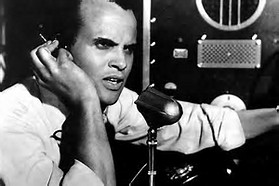
The World, the Flesh and the Devil (1959) / Sci Fi-Drama
aka The End of the WorldMPAA Rated: Not rated, but probably PG for violence and some brief language
Running Time: 95 min.Cast: Harry Belafonte, Inger Stevens, Mel Ferrer
Director: Ranald MacDougall
Screenplay: Ranald MacDougall (based of Ferdinand Reyher's story, "End of the World" and M.P. Shiel's novel, "The Purple Cloud")
Review published September 2, 2015
 The awkward title, The World, the Flesh
and the Devil comes from the Christian theological representation
of the three enemies of the soul -- the sources of temptation to sin.
In the film, the world changes so that different rules may apply, the
flesh being the attraction between a man and a woman, and the devil
being that metaphorical one that is within us to commit heinous acts
so that we may possess the things we desire most.
The awkward title, The World, the Flesh
and the Devil comes from the Christian theological representation
of the three enemies of the soul -- the sources of temptation to sin.
In the film, the world changes so that different rules may apply, the
flesh being the attraction between a man and a woman, and the devil
being that metaphorical one that is within us to commit heinous acts
so that we may possess the things we desire most.